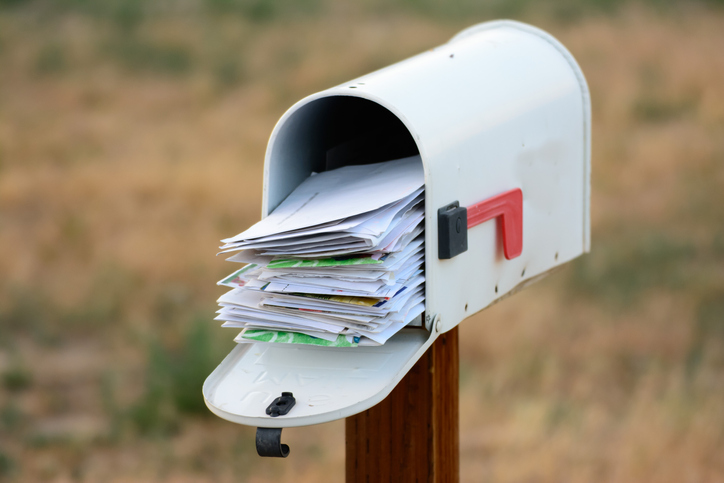
Advocacy Mail That Builds Capacity
I have yet to encounter a client that doesn’t need to grow its advocate and/or donor bases, and letter packages are here to help! (Yep, I’m shouting about letter packages.) advocacy mail letter packages are not the answer to every advocacy campaign’s needs, but in the world of direct mail, they can pack a pretty great one-two punch. They are statistically proven to be effective (people open them), and they can be formatted with a reply device, so you can actually list build with them.
In the event that you’ve outlined your overall advocacy strategy and determined that direct mail is a tactic that makes sense (check out advocacy strategy vs. advocacy tactics here), the next step is to think through whether part of that mail program should be a letter package. This blog is going to be divided into two parts. This installment will walk through basic best practices for letter packages and where they can be useful, and the second will be a deeper dive on the use of a reply device.
Letter package best practices run a little counter to the way other mail formats are designed. Instead of making them big, colorful and sleek, letter packages should be designed with an eye toward looking governmental (read: UGLY) and official. Essentially, you’re prompting people to open the envelope and read by making them think this is a piece of information they need to see (a notice from the government, a bill, etc.).
So let’s start with the envelope. There are a few different formats you can go with, and those formats will have different price points. Typically, the simplest (and cheapest) option is to go with a #10 window envelope, as it means you can address the letter and and see the address through the envelope window, instead of having to match a specific envelope to a specific letter. Other options include self-sealed envelopes with perforated edges (like when you get a check in the mail) or regular letter-size envelopes without a window.
Aside from the format, there are a few things to keep in mind with respect to the envelope. If possible, I’d recommend leaving it unbranded, skipping logos and just doing a basic address-only return address. This helps keep it all looking official.
You should also include an official sounding prompt – something that will pique the interest of the reader and signal the importance of the content. For instance, “IMPORTANT INFORMATION ABOUT YOUR WATER QUALITY,” is likely to catch a reader’s attention. Typically, these prompts are inside a box on the front of the envelope.
The contents of the letter package should make it clear what the issue is, why the reader should care, and what they can do to help. If you’ve got a reply device in the mix, your call to action should be aimed at getting them to complete it. Additionally, letter packages provide you with a longer format to make your argument than a typical postcard mailer. This doesn’t mean you should write a novel, but it does mean you have the space to include a little more nuance around your advocacy issue than you might otherwise have. A word to the wise: don’t go nuts with the extra space and be very careful with your language (meaning, avoid insider jargon and just because you have the space to use a 10-syllable SAT word doesn’t mean you should).
The letter itself should also make it clear who the sender is. While the envelope should be a little mysterious, you don’t want people to read the letter and feel they’re being duped. Include your disclaimer and add your logo (if appropriate) so that it’s clear to the reader that you’re responsible for the mailing.
A lot of people get hung up on the letter signer. Sure, if you can get Oprah to be your sender, you may well get a bigger response, but on the whole, I think it’s just about looking like a proper letter with a signatory. You don’t have to get a huge name – keep it simple where you can and remember that who the signer is will often be inside baseball that isn’t important to the average reader.
The one exception to this, in my opinion, is if you’re able to get a testimonial. In that case, the ability to tell a story that illustrates the human impact of the issue you’re talking about is powerful and worthwhile. Obviously, this means that the signer should be the storyteller and that their identity is a key piece of the letter. To be very clear, this isn’t about getting a big-name storyteller, it’s about getting someone to tell their story about their experience in their community.
To sum up, characteristics of a letter package for an advocacy mailing include:
- An official look and feel (in black and white)
- Lack of branding on the envelope
- A short sentence on the envelope about what’s inside
- A letter that describes the issue, why it’s important and what the reader can do
- A signature
And if you’ve got the budget, your advocacy mail letter package should also include a reply device, so you can work toward those secondary institutional goals like building a strong advocacy base or growing your donor list.
Stay tuned for our second installment, “Letter Packages, What’s in a Reply Device?” It’s going to be riveting.
Want to dig deeper? Click the button below to check out our ebook collection. Still have questions? Drop us a note!